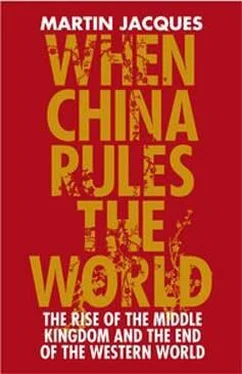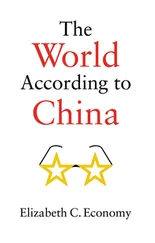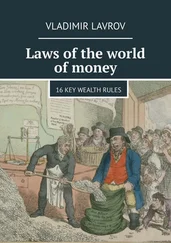This raises the wider question of the extent to which the contrasting attitudes of the European and Chinese states, and their respective elites, were a factor in China ’s failure to make the breakthrough that Europe achieved. The capacity of the Chinese state was certainly not in question: as we shall see in Chapter 4, it was able to achieve quite extraordinary feats when it came to the mobilization of economic and natural resources. [69] [69] ‘The capabilities of the Qing to manage the economy were powerful enough that we might even call it a “developmental agrarian state”’: ibid., p. 541.
The highly developed granary system, the government-built 1,400-mile-long Grand Canal and the land settlement policies on the frontiers all demonstrated a strong interventionist spirit. The imperial Chinese state also had the experience and ability to transport bulk commodities over long distances, though its priority here was not coal but grain, salt and copper, since these were crucial for maintaining the stability, cohesion and subsistence of the population, always an overriding Chinese concern. [70] [70] Ibid., p. 540.
Herein, in fact, lay a significant difference: the priorities of the imperial state tended to be focused on the maintenance of order and balanced development rather than narrow profit-making and industrialization. The state was resistant to excessive income differentiation and marked displays of extravagance, which were seen as inimical to Confucian values of harmony. [71] [71] Bin Wong, China Transformed , p. 138.
The state did not block market activities and commerce — on the contrary, it strongly supported the development of an agrarian market economy — but it did not, for the most part, promote commercial capitalism, except for those merchants engaged in the monopolies for salt and foreign trade. In contrast, the European state, especially the British, tended to be more responsive to the new industrial possibilities. [72] [72] Ibid., p. 149.
Likewise, the imperial state did not believe in pitting one province against another, which would clearly have made for instability, whereas in Europe such competition took the form of nation-state rivalry. The main reason for the different mentalities of the Chinese and Western European states was that while the rising merchant classes were eventually incorporated, in one form or another, into European governance, in China they remained firmly outside, as they have remained to this day. [73] [73] Ibid., pp. 147-9.
Rather than enjoying an independent power base, the merchants depended on official patronage and support to promote and protect large-scale commercial undertakings. Western European states, and in the first instance the British, were more favourably orientated towards industrial development than China, where the administrative class and landed interest still predominated. [74] [74] Elvin, ‘The Historian as Haruspex’, pp. 98-9; Fairbank and Goldman, China , pp. 180-81; William H. McNeill, The Rise of the West: A History of the Human Community (Chicago and London: University of Chicago Press, 1991), pp. 525-9.
In 1800, therefore, Britain enjoyed two long-term — as opposed to contingent — advantages over China. The British state (and, in varying degrees, other Western European states) was more favourably disposed towards industrialization than the Chinese state, while colonization and persistent intra-European wars had furnished Western Europe with various strategic assets, notably raw materials and military capacity. The fact that colonization was to provide Britain with the means by which to side-step its growing land and resource problem towards the end of the eighteenth century, however, was entirely fortuitous. The point remains, therefore, that in 180 °China (and, indeed, Japan) found itself in a rather similar economic position to Western Europe and possessed a not dissimilar potential for economic take-off. What made the decisive difference were those contingent factors — New World resources and, to a lesser extent, accessible supplies of coal — that enabled Britain to deal with its resource constraints, together with the supportive attitude of the British state towards industrialization. China enjoyed no such contingent salvation and, as a result, found itself in a hole from which it was unable to extricate itself, a situation that was to be exacerbated within less than half a century by the growing incursions of the European powers, especially Britain, beginning with the Opium Wars. The historical consequences were to be enormous: China was at least as agrarian in 1850 as it was in 1750 and not much less so even in 1950. According to the economic historian Angus Maddison, China ’s GDP in 1820 was $228.6 billion — almost four times greater than in 1600 — but had barely increased at all by 1913, by which time it had nudged up to $241.3 billion, and actually fell to $239.9 billion in 1950. [75] [75] Maddison, The World Economy: Historical Statistics , p. 249.
If the root cause of China’s catastrophic performance between 1800 and 1950 lay not circa 1600 but circa 1800, then the antecedents of China’s present economic dynamism, rather than being lost in the mists of time, are, on the contrary, relatively recent. [76] [76] ‘The source of Chinese weakness, complacency, and rigidity, like the Industrial Revolution itself, was late and recent, not deeply rooted in China ’s traditional culture.’ Perdue, China Marches West , p. 551; also p. 541.
This makes China ’s remarkable economic transformation since 1978 rather more explicable. [77] [77] Arrighi, Adam Smith in Beijing , p. 27.
Far from being a basket-case, the Chinese economy in 1800 remained, in many respects, very dynamic; society continued to be highly competitive, the peasantry displayed a powerful capacity to adapt and innovate, and merchants possessed considerable commercial acumen. While these characteristics may have remained relatively dormant in the inclement intervening period, after 1978 they have once again come to the fore. [78] [78] Paul A. Cohen, Discovering History in China: American Historical Writing on the Recent Chinese Past (New York: Columbia University Press, 1984), p. 79.
To this we might add a further contemporary point. In 1800, rather than being Eurocentric, the global economy was, in fact, polycentric, economic power being shared between Asia, Europe and the Americas, with China and India the two largest economies. The global economy is now once more becoming increasingly multipolar. Rather than regarding this as unusual, perhaps instead we should see the last two centuries, in which economic power became concentrated in the hands of a relatively small part of the world’s population, namely Europe and North America, as something of an historical aberration. Colonization, furthermore, was to play a crucial role in this outcome, by providing some of the preconditions for Europe to break into Prometh ean growth while at the same time also bestowing on it the power and opportunity to stifle and distort the economic development of much of the rest of the world for a century or more.

Figure 3. The fall and rise of China and India: changing shares of global GDP, 1820–2001.
PRECONDITIONS OR CHARACTERISTICS?
If, towards the end of the eighteenth century, Western Europe was in a rather similar position to China, the implications for our understanding of history and subsequent events are far-reaching. It suggests that the explanation for the rise of Europe was in large part to do with relatively short-term factors rather than preordained by its slow but steady transformation over previous centuries; in other words, we need to rethink the idea that the ensemble of characteristics which Europe had been acquiring over centuries, and enjoyed on the eve of economic take-off, were, as has often been assumed, also preconditions for that take-off. They might have been desirable, they could have been advantageous, but were they also conditions without which the process would never have happened at all? Japan, China and India were not too far away from achieving a similar economic breakthrough but their political and cultural histories contrasted sharply with that of Europe. If they had succeeded and Europe failed, then the characteristics of their subsequent paths of development, and the institutions and values they would have spawned, would certainly have looked very different from those we have come to associate with Europe. Indeed, as we shall see later, as these countries have modernized they have diverged markedly from the European template.
Читать дальше













